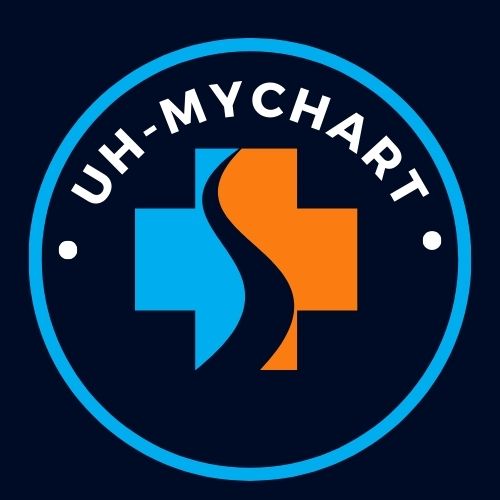When it comes to ensuring that millions of families in the United States have access to sufficient food, the Supplemental Nutrition Assistance Program (SNAP) is an essential component. The modification of the maximum SNAP Benefit, which now has the potential to reach as high as $1,751 for families who are qualified, is one of the most important adjustments that will take place in October 2024.
Many people in the United States, particularly during times of economic instability, rely on the Supplemental Nutrition Assistance Program (SNAP), which was developed to assist low-income families and individuals in affording necessary food products.
As inflation continues to rise and the cost of food continues to rise, the program continues to develop in order to be able to satisfy the requirements of those who receive it. With this increase, we want to assist bigger families and individuals who are experiencing significant economic issues in meeting their dietary requirements without further putting them in a difficult financial position.
In the year 2024, this article will walk you through the complexities of the Supplemental Nutrition Assistance Program (SNAP), concentrating on the dates of payment, the eligibility requirements, and the process of claiming these benefits.
Additionally, we will present information on how to make the most of your Supplemental Nutrition Assistance Program (SNAP) benefits, dispel common fallacies, and investigate the possibility of future improvements to the program.
$1,751 SNAP Benefit October 2024
SNAP is a government program that is administered by the United States Department of Agriculture (USDA). Its purpose is to give financial assistance on a monthly basis to families and individuals who meet the requirements in order to buy food. These benefits are given to recipients using a card known as an Electronic Benefits Transfer (EBT) card.
| Post Title | $1,751 SNAP Benefit October 2024 |
| Year | 2024 |
| Issuing Month | October |
| Official Web page | www.usda.gov |
| Post Category | Government Aid |
This card operates similarly to a debit card and enables users to spend it at participating businesses and even at select online sites. Although households with a high number of members are eligible for the maximum benefit of $1,751, smaller families or persons living alone will still be eligible for additional benefits according to the size of their home.

The update for October 2024 takes into account continuing modifications to the cost of living and inflation, both of which have had a significant influence on the pricing of food over the course of the last several years.
Regardless of whether you are already receiving Supplemental Nutrition Assistance Program (SNAP) benefits or are contemplating enrolling for the program for the very first time, this detailed guide will ensure that you are well-informed on what to anticipate in the months to come.
For recipients to be able to make use of their benefits, it is anticipated that they would purchase qualified food items. These food items often consist of natural goods, vegetables, dairy products, and meats. Certain non-food items, such as food for pets and supplies for the home, are not eligible for purchase via the Supplemental Nutrition Assistance Program (SNAP).
Qualification Required to Receive SNAP Benefit
Whether a family is eligible for the Supplemental Nutrition Assistance Program (SNAP) benefit of $1,751 or any other amount under the program is contingent upon a number of criteria, including the household’s income, size, and costs. SNAP is intended to provide assistance to families who fall below specified income limits, which vary depending on the makeup of the family and the standards that are particular to each state.
As of October 2024, the qualifying requirements have been revised to take into account the rising cost of living. This will ensure that a greater number of families will be able to receive the necessary help with their food needs.
The following is a list of the key considerations that are taken into account while determining eligibility for SNAP benefits:
Net Monthly Income
To be eligible for the Supplemental Nutrition Assistance Program (SNAP), families must fulfill certain income restrictions on a monthly basis. Gross monthly income must typically be at or below 130% of the federal poverty level (FPL) in order to qualify for assistance. In terms of monthly expenses, this amounts to around $2,900 for a household of four.
It is important to note that the precise income restrictions may differ from state to state and from family to household.
After taking into account certain deductions that are permitted, such as housing, utilities, childcare, and medical expenditures for members of the family who are elderly or handicapped, families are required to satisfy the net income ceiling, which is set at one hundred percent of the federal poverty line.
These deductions assist decrease the total income of many families, which in turn enables them to qualify for larger benefits when they are eligible for them.
Size of the Household
The SNAP benefit is increased according to the size of the household. As long as there are eight people living in the home, the full benefit of $1,751 may be available to them. There will be a reduction in the benefits awarded to smaller homes; nevertheless, these benefits are still scaled to give enough food assistance depending on the needs of the family.
In order to be eligible for Supplemental Nutrition Assistance Program (SNAP) payments for more than three months during a three-year period, able-bodied adults without dependents (ABAWDs) are required to work a minimum of twenty hours per week.
Individuals who are disabled, elderly citizens, and those who are responsible for the care of dependents or children are eligible for exemptions.
Some Constraints For Receiving SNAP Benefit
In order to be eligible for the Supplemental Nutrition Assistance Program (SNAP), households must also fulfill certain asset restrictions. In most cases, families are permitted to have a maximum of $2,750 worth of countable resources.
However, households that include at least one member who is either 60 years old or disabled are permitted to have a maximum of $4,250 worth of assets. There are certain assets that are not included in these restrictions, such as the principal house and retirement savings.
There may be additional criteria for qualifying that states have in addition to these requirements. These may include residence restrictions or particular evidence that is required to demonstrate that the applicant is experiencing financial hardship.
Local SNAP offices or online state portals provide resources that may help you in navigating the application process. These resources are available to you if you are unclear about your eligibility or if you need assistance in applying.
Final Thoughts About $1751 SNAP Benefit
The rise in the Supplemental Nutrition Assistance Program (SNAP) benefit for October 2024, which is $1,751, is a major step in the continued efforts to promote food security for millions of Americans.
This improved benefit guarantees that bigger families, particularly those with several dependents or those with special needs, have access to the resources required to maintain a balanced diet, which is especially important in light of the fact that food costs continue to increase as a result of inflation and other external economic pressures.
| Homepage | https://uhmychart.org/ |
A cornerstone of the nation’s social safety net for a long time, the Supplemental Nutrition Assistance Program (SNAP), which is managed by the United States Department of Agriculture (USDA), has undergone various revisions to demonstrate its dedication to meeting the ever-changing requirements of its recipients.





